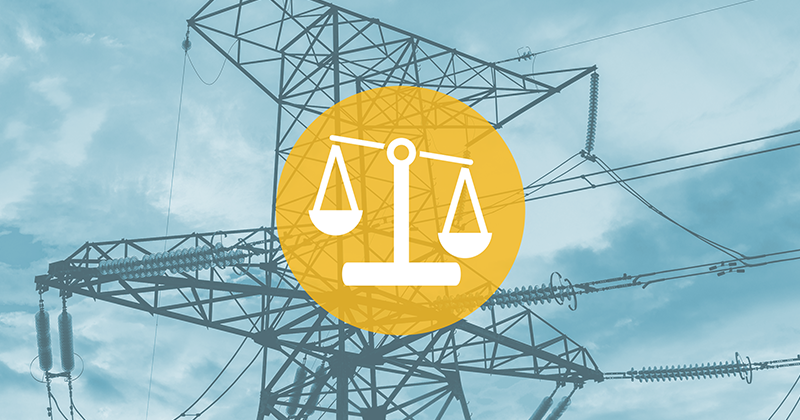
We will get past this at some point. When exactly is still unknown and likely to vary by region, state, or metropolitan area. Another key unknown is this: What aspects of the utility business model will resemble what we remember and what aspects will have changed for the foreseeable future?
If we knew the answer to that question now, we could more easily plan for how to deal with each aspect in turn from an operational, financial, and regulatory standpoint. The absence of clarity, however, does not release leaders from their responsibility to develop a regulatory strategy to shape the recovery.
We know utilities must prioritize the crisis response first. However, tasking key people, who are not on the front line, with doing certain things now will improve the chances of a successful recovery and shorten the duration of the disruption.
Utility leaders and their regulators recognize that financially stable utilities are critical to modern-day life. With that in mind, some commissions and many utility leaders have acted to ensure utilities remain healthy through and after COVID-19.
Some States and Many Utilities Have Already Taken Action
- As they did with the Tax Cuts and Jobs Act of 2017, state regulators are beginning to take action to require utilities to track and account for the financial effects of the disruption. While these actions understandably have taken the time (due to the magnitude of the crisis response), we expect them to accelerate.
- As of the writing of this piece, five states (Texas, Connecticut, Maryland, Nevada, and Wisconsin) have taken action, and Wyoming has invited utilities to request action be taken. The orders require utilities to track expenses (and in some cases lost revenues) related to their COVID-19 response and establish regulatory assets to capture the impact. The treatment and recovery of the regulatory assets (including prudency review of the deferred expenses) will be addressed in a future rate proceeding.
- In the absence of regulatory action, utilities may consider proactively filing a request for similar treatment either unilaterally or by filing a joint petition with their peers in a given jurisdiction
Drivers of an Effective Regulatory Recovery Strategy
How you go about seeking regulatory recovery from the COVID-19 disruption will depend on forces outside of your control and your current regulatory situation.
- Exogenous forces include the severity of the pandemic in your states or metropolitan areas, your existing customer mix, and actions taken by government entities.
- Aspects of your current regulatory framework also will drive many decisions. For example:
- Do you currently operate under an annual-filing mechanism? If so, the recovery may come in the normal course of business. Encourage your regulators to stay the course, keep tariff-driven filing and procedural dates intact, and allow the mechanism to work as intended.
- Are you currently engaged in a proceeding, or did you have one planned immediately prior to the disruption? If so, stay the course, but anticipate and allow for procedural flexibility.
- If neither of those situations applies, you may consider an accounting order to lessen the financial effect of the crisis. If your state fails to act, consider requesting deferral treatment, alone or jointly, with your peer companies.
- The timing of your request for recovery (of the regulatory asset or your properly tracked expenses) and the recovery of those costs will depend on factors such as:
- Length of regulatory lag in your jurisdiction and time elapsed since your last rate change
- The severity of the disruption (caused by existing customer mix, rate design, and your geography)
- Your expected operating cash flow and liquidity
Things to do Now
Communicate with Regulators
- Participate in and initiate discussions. Establish the framework for your desired outcome and vet it internally as necessary so that you are prepared to take advantage of advocacy opportunities when they present themselves.
- Communicate to your regulators the critical nature of the recovery as a means to maintaining your cost-effective, safe, and reliable service going forward.
Communicate with Peers
- Discuss your unique situation with peer utilities in your state. Decide whether to work together toward a regulatory solution or, at a minimum, work toward developing consistent themes.
Take Care of Business
- Exceptional operations and crisis management will pay dividends when the time comes to recover your prudently incurred costs. Put first things first. Take care of your employees. Take care of your customers. Continue to provide safe and reliable service without exception. Coordinate with first responders.
Tracking the Financial Effects of the Disruption
Whether or not you are subject to an existing accounting order or plan to request one, tracking the effect of the disruption is critical in the event situations change and deferrals accelerate as expected. This list is by no means intended to be exhaustive. Rather, it is for your consideration as you plan your regulatory responses to the disruptions caused by COVID-19. The decision to defer specific items or include them in your request for recovery should be the result of collaborative discussions with your accounting, regulatory, and strategic planning functions.
- Revenues
- Lost revenues due to suspension of economic activity translating into significant load loss in commercial, industrial, and public authority classes.
- Lost revenues to help customers facing hardship, such as suspended late fees and reconnect fees.
- Expenses
- Increased expenses such as bad debt, PPE supplies, sanitation protocols, quarantine site preparation for mission-critical employees, work-from-home expenses, PTO for quarantined employees, etc.
- Capital Expenditures (Capex)
- Increased capex, such as laptops, networking, and security-related investments associated with your workforce working from home. These types of investments will be particularly susceptible to the detrimental impacts of regulatory lag and highlight the need to address them in your next proceeding.
- Possible decreases in capex due to suspended economic activity, reprioritization, workforce disruption, cash conservation, and compliance with local mandates.
- It will be critical to model the impact of capex changes on future earnings and adjust strategic plans accordingly.
Although the issues introduced here may be in the back of your mind today as you focus on crisis management, their complexity, and importance will only increase as we transition from crisis response to recovery. Developing your regulatory plan now will enable you to manage the recovery period. ScottMadden is here to help you understand, digest, and develop actionable plans to address these issues. In addition, we are uniquely positioned to help you execute those plans with active participation throughout the regulatory process. Our consultants have extensive experience in rate case strategy, mechanism and tariff design, regulatory lag reduction, and expert testimony. We can help you get through this disruption and help ensure that you are better equipped to deal with the next one.




































































